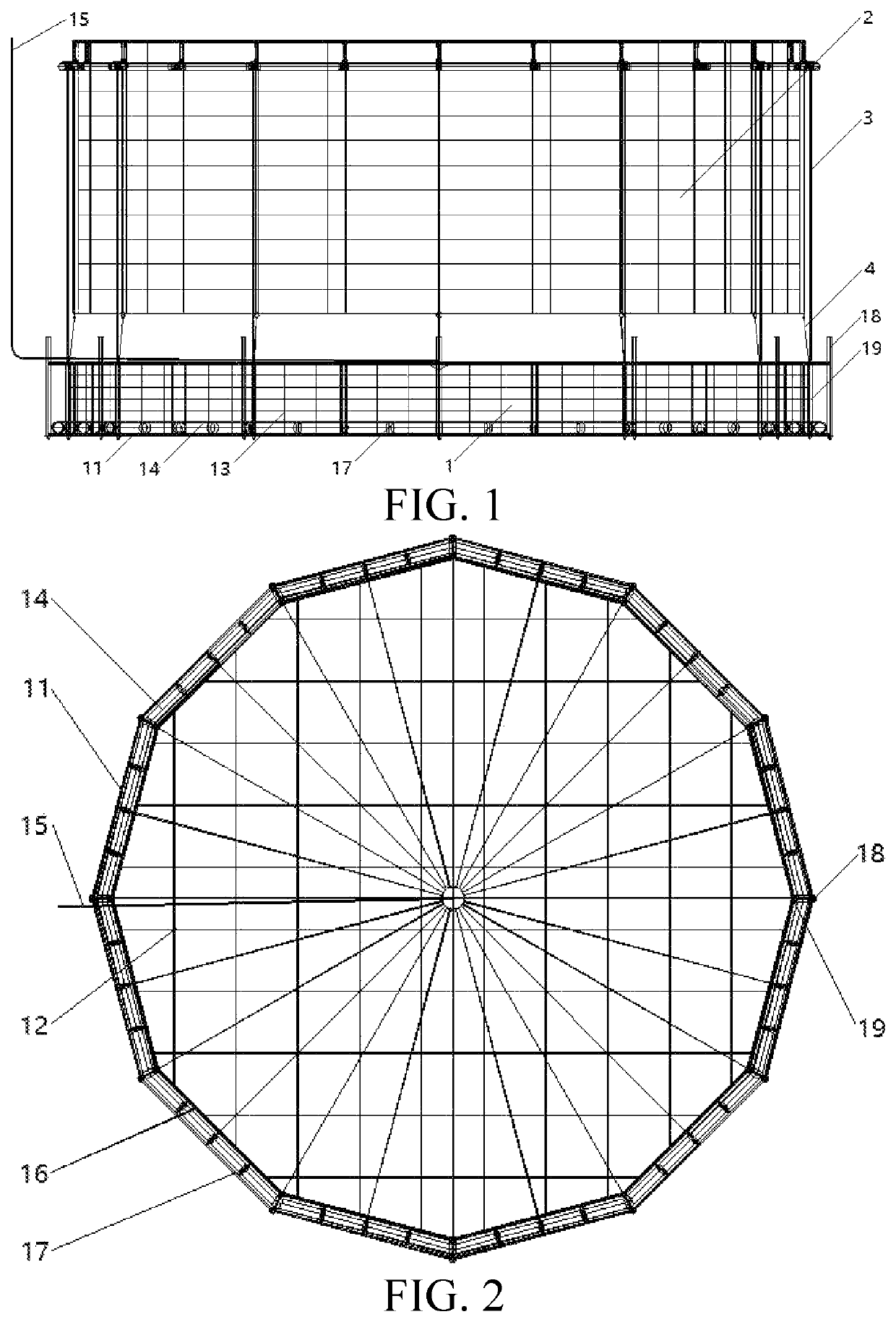Steel structure cage for marine crustacean aquaculture and integration thereof into vertical fish-crustacean aquaculture system
a technology of steel structure and aquaculture, applied in the field of cages, can solve the problems of poor quality prawns, serious pollution, and violations of sustainable development of marine crustaceans, and achieve the effects of reducing the number of cages, and improving the quality of fish
- Summary
- Abstract
- Description
- Claims
- Application Information
AI Technical Summary
Benefits of technology
Problems solved by technology
Method used
Image
Examples
Embodiment Construction
The following further describes exemplary embodiments of the present application in detail.
As shown in FIG. 1 to FIG. 7, a steel structure cage for marine crustacean aquaculture in an embodiment includes a steel frame 11, a top net system 12, a bottom net system 12, a side net system 13, a ballast tank system 14, and a feeding pipe 15. The steel frame 11 includes an internal steel frame and an external steel frame and the cross section of the steel frame 11 is a regular polygon. The top net system 12 and the bottom net system 12 are weaved by nylon or polyethylene nets and net tendons. Edges of the top net system 12 and the bottom net system 12 are fixed into the steel grooves 16, so that the top net system 12 and the bottom net system 12 are connected to the internal frame of the steel frame 11 in a seamless manner. The side net system 13 is a stainless steel net and is welded on the internal frame of the steel frame 11. That is, the bottom net system 12, the side net system 13 and...
PUM
 Login to View More
Login to View More Abstract
Description
Claims
Application Information
 Login to View More
Login to View More - R&D
- Intellectual Property
- Life Sciences
- Materials
- Tech Scout
- Unparalleled Data Quality
- Higher Quality Content
- 60% Fewer Hallucinations
Browse by: Latest US Patents, China's latest patents, Technical Efficacy Thesaurus, Application Domain, Technology Topic, Popular Technical Reports.
© 2025 PatSnap. All rights reserved.Legal|Privacy policy|Modern Slavery Act Transparency Statement|Sitemap|About US| Contact US: help@patsnap.com



